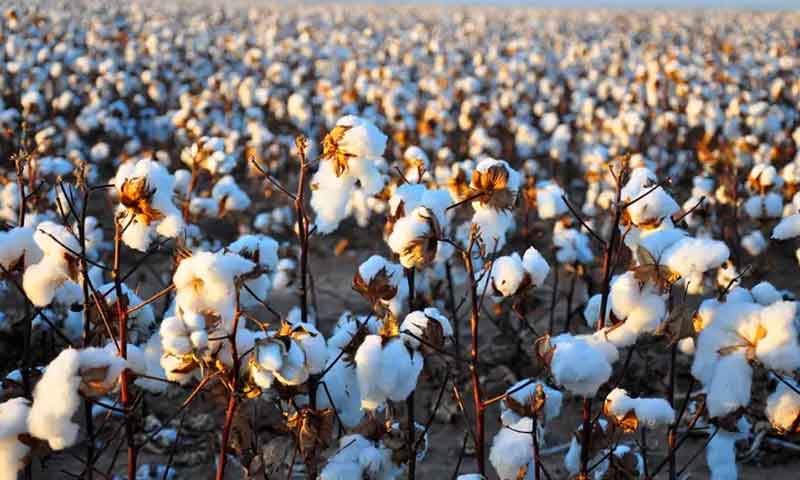
When we observe the demographics of the region where the majority of the population lives in the fertile plains of Punjab and Sindh, whom experience a long and extreme summer season, it makes cotton as a fabric ideal to be worn. Moreover a large segment of the population regardless of their gender prefers wearing shalwar kameez due to its comfort and in accordance to other societal norms. This makes clothing a sizeable market to pursue and target the selling of Wrinkle free cotton products. In winters too although there are more alternatives available in terms of fabrics, we can note (Latha) being a popular choice especially in the rural population of Pakistan. This article aims to explore the viability of wrinkle-free cotton in the context of the Pakistani clothing market, considering various factors such as consumer preferences, economic limitations, manufacturing processes, and market trends.
Discussion:
Consumer Preferences and Expectations:
The Pakistani clothing market is diverse, catering to a wide range of consumer preferences. Western wear, traditional ethnic attire, and fusion styles coexist in the market. Modern lifestyles demand clothing that is not only comfortable but also requires minimal maintenance. Wrinkle-free cotton addresses this need by offering garments that maintain their pristine appearance throughout the day. Consumer expectations for wrinkle-free cotton extend beyond mere aesthetics. They seek garments that retain their softness, breathability, and durability while minimizing the hassle of ironing or steaming.
The type of cotton to be worn also depends upon relevant income groups as the masses cannot afford more costly imported PIMA (American) and Giza (Egyptian) cotton suits. However it’s the consumer who determines the quality in the end and whatever satisfies their needs. For some it may be price and for others it may be lesser the wrinkles they get on their cotton suit the better they perceive it to be.
Challenges in Achieving Wrinkle-Free Cotton:
Cotton fibers have a natural tendency to wrinkle due to their molecular structure and the alignment of cellulose molecules. Overcoming this inherent property poses a significant challenge for textile engineers. Traditional methods of wrinkle reduction, such as chemical treatments and mechanical processes, often compromise the integrity of cotton fibers and may introduce harmful substances into the fabric.
Potential Innovative techniques to be used in manufacturing:
Researchers have explored various approaches to render cotton wrinkle-free while preserving its desirable qualities. One promising avenue involves the use of nanotechnology to modify the surface properties of cotton fibers, thereby reducing friction and enhancing wrinkle resistance. Advancements in textile finishing technologies, such as enzymatic treatments and mechanical stretching, offer more sustainable and eco-friendly alternatives to traditional chemical treatments.The integration of smart textiles and functional finishes holds the potential to revolutionize the concept of wrinkle-free cotton, enabling garments to actively respond to environmental conditions and wearer preferences.
Economic Limitations and foreign competition:
Bangladesh’s cotton output increased by 1.3% in 2022-2023, reaching 153 thousand bales, and reduced reliance on imports from 98% to 96%. The country’s cotton production was boosted by high-yielding cultivars, organic farming methods, and integrated pest control strategies. While Pakistan’s cotton industry faced challenges such as low production, insect infestation, water shortage, climate change, political instability, and lack of research and development. The country’s cotton output decreased by 23% in 2022-2023, reaching 5.5 million bales, the lowest in 30 years. The country relies heavily on low-value goods like yarn and gray fabric, which have slim profit margins and face fierce competition. Pakistan must act quickly to revive its cotton industry and increase its global market competitiveness.
Conclusion:
To conclude, the pursuit of wrinkle-free cotton represents a convergence of consumer demand, technological innovation, and sustainability concerns within the textile industry. While challenges persist in achieving the perfect balance between wrinkle resistance and fabric integrity, ongoing research and development efforts continue to push the boundaries of what is possible.
By addressing these challenges and capitalizing on market opportunities, wrinkle-free cotton could emerge as a significant player in the Pakistani textile industry. In the quest for the ideal blend of comfort, style, and functionality, wrinkle-free cotton emerges as a compelling solution that embodies the ethos of modern living.
References:
1. Adams, W., & Chopra, S. (2018). Wrinkle Resistance Finishing of Cotton Fabric Using Nano-Zinc Oxide. *Journal of Engineered Fibers and Fabrics, 13*(1), 155892501801300105. [Link](https://journals.sagepub.com/doi/full/10.1177/155892501801300105)
2. Das, A., et al. (2020). Sustainable Wrinkle-Free Cotton Fabric through Plasma Treatment: A Novel Approach. *Materials Today: Proceedings, 34,* 308-313. [Link](https://www.sciencedirect.com/science/article/pii/S2214785320322849)
3. Ghosh, A., & Prakash, C. (2019). Smart Finishing of Textiles for Wrinkle Resistance: A Review. *Journal of Textile Science and Engineering, 9*(2), 1-6. [Link](https://www.hilarispublisher.com/open-access/smart-finishing-of-textiles-for-wrinkle-resistance-a-review-1532-1900-1000225.pdf)
4. Kothari, V. K., et al. (2016). Recent Developments in Wrinkle-Free Finishing of Cotton Textiles: A Review. *Cellulose Chemistry and Technology, 50*(9-10), 857-870. [Link](https://cellulosechemtechnol.ro/pdf/CCT9-10(2016)/p.857-870.pdf)
5. Pal, K., et al. (2017). Wrinkle-Free Finishing of Cotton Fabrics Using a Polysaccharide-Based Bio-Polishing Formulation. *Journal of Engineered Fibers and Fabrics, 12*(2), 1-9. [Link](https://journals.sagepub.com/doi/abs/10.1177/155892501701200202)




